|
Podu Turcului, Romania
Coordinates: 46.204°N 27.386°E |

|
|
Podu Turcului, Romania
Coordinates: 46.204°N 27.386°E |

|
| Home | Maps | Photos | Cemetery | Memoirs | Database | Contact |
After the 2012 IAJGS International Conference on Jewish Genealogy in Paris, my wife and I made a tour of Romania, with a special focus on Podu Turcului and Botoşani in Romania and Chişinău in today’s Moldova (and using Iaşi as a hub). Here are some of the things we saw as we traveled around Romania. Frequent sights along the roads are horse-drawn wagons and Romani (gypsies) with their colorful clothing.


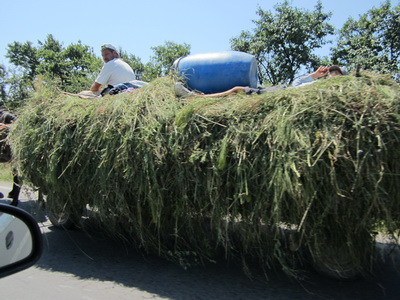 Sometimes, the wagons were amazingly heavily loaded and blocked the road.
(And the hay here made a nice bed for the passenger!)
Sometimes, the wagons were amazingly heavily loaded and blocked the road.
(And the hay here made a nice bed for the passenger!)
 We were surprised to see numerous public wells along the road. Apparently,
many houses, at least those outside the villages, do not have running
water. We saw people walking along the side of the road carrying water to
their homes.
We were surprised to see numerous public wells along the road. Apparently,
many houses, at least those outside the villages, do not have running
water. We saw people walking along the side of the road carrying water to
their homes.
As we approached Podu Turcului from the west on Route 11A, we saw the two welcome signs below.
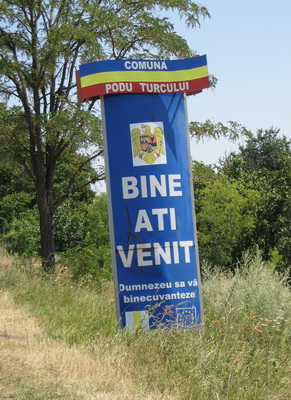
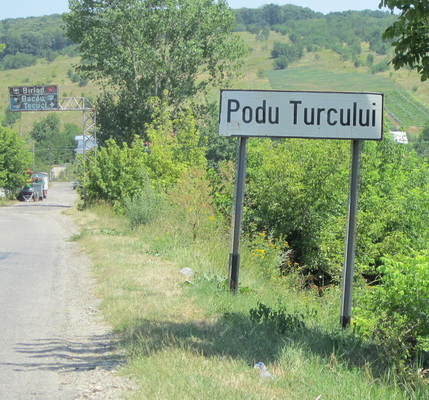
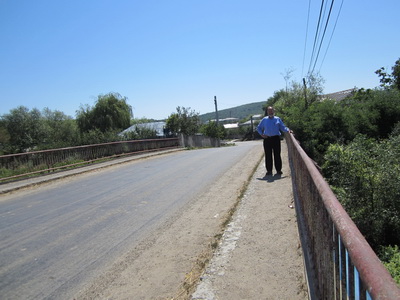 According to one story, the village got its name (podu or
podul = bridge and Turc = Turk) because, before there was a
bridge over the river that runs by the village, a Turkish man operated a
ferry there that served as a bridge across the river (i.e., Bridge of the
Turk). However, other information says that there had been an older bridge
across the river for several centuries (which makes more sense) before it
was replaced by the newer bridge shown here. Perhaps the Turk built or
owned the bridge.
According to one story, the village got its name (podu or
podul = bridge and Turc = Turk) because, before there was a
bridge over the river that runs by the village, a Turkish man operated a
ferry there that served as a bridge across the river (i.e., Bridge of the
Turk). However, other information says that there had been an older bridge
across the river for several centuries (which makes more sense) before it
was replaced by the newer bridge shown here. Perhaps the Turk built or
owned the bridge.
 Probably because of the heat wave and drought when we visited, the river
had dried up to a narrow stream. The length of the bridge suggests that at
times the river is much wider.
Probably because of the heat wave and drought when we visited, the river
had dried up to a narrow stream. The length of the bridge suggests that at
times the river is much wider.
Here are some street scenes from the summer of 2012. Amazingly, the Google Street-View car has photographed the main streets in Podu Turcului, so one can now take a virtual walk down these streets. Click HERE to enter Street-View at the location shown in the lower-left photo.
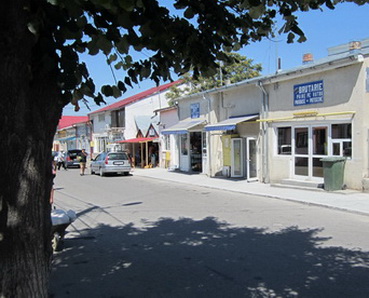
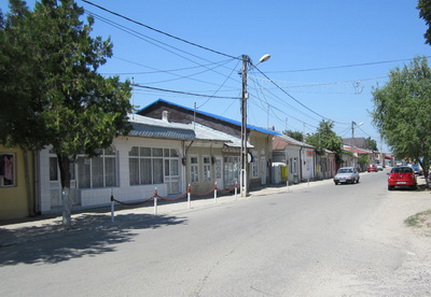
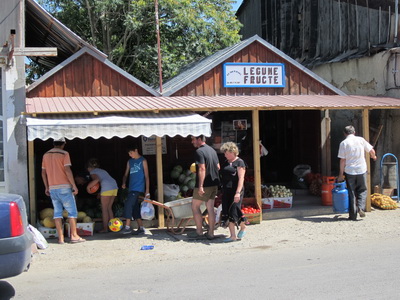
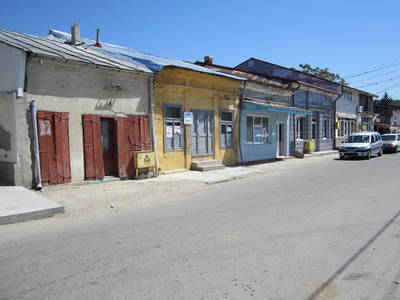
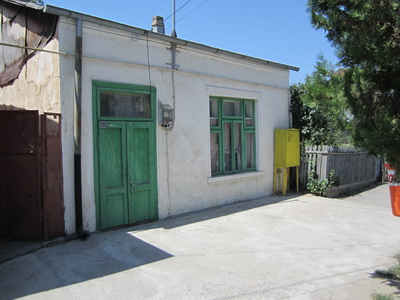 In many countries, Jewish homes were designed differently from those of
non-Jewish neighbors, and this was probably true in Romania as well. The
usual house would have the entrance door on the side for privacy. Because
Jews often operated small businesses from their homes, their houses had
the door on the front to the street. Although there are no longer any Jews
living in Podu Turcului, their houses remain.
In many countries, Jewish homes were designed differently from those of
non-Jewish neighbors, and this was probably true in Romania as well. The
usual house would have the entrance door on the side for privacy. Because
Jews often operated small businesses from their homes, their houses had
the door on the front to the street. Although there are no longer any Jews
living in Podu Turcului, their houses remain.
We looked to see if we could find indications of where mezzuzot had been attached to the entrance doors, but we did not find any that were clear. Of course, it has been many decades since the Jews left or were driven away.
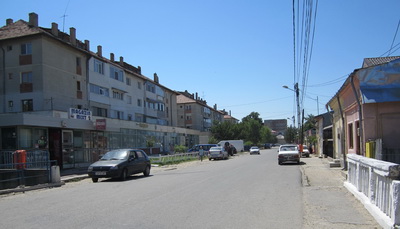 During the Communist era, under Ceausescu, the typical drab, concrete
buildings were constructed. Most of Podu Turcului is free of such
buildings, which are found only on the stretch of Route 11A that parallels
the old main street.
During the Communist era, under Ceausescu, the typical drab, concrete
buildings were constructed. Most of Podu Turcului is free of such
buildings, which are found only on the stretch of Route 11A that parallels
the old main street.
| JewishGen Home Page | KehilaLinks Directory | Romania SIG |
|
Compiled and copyright ©2025 by
Jay Sage.
Site last updated: 13 July 2025 |
||